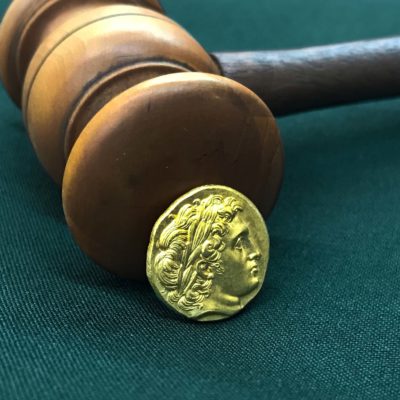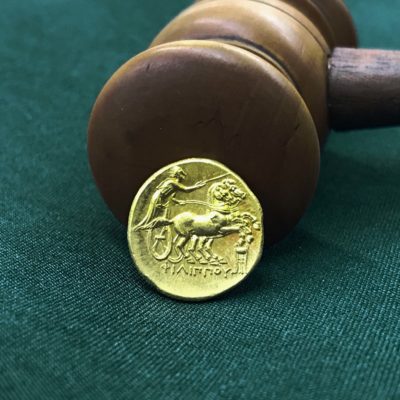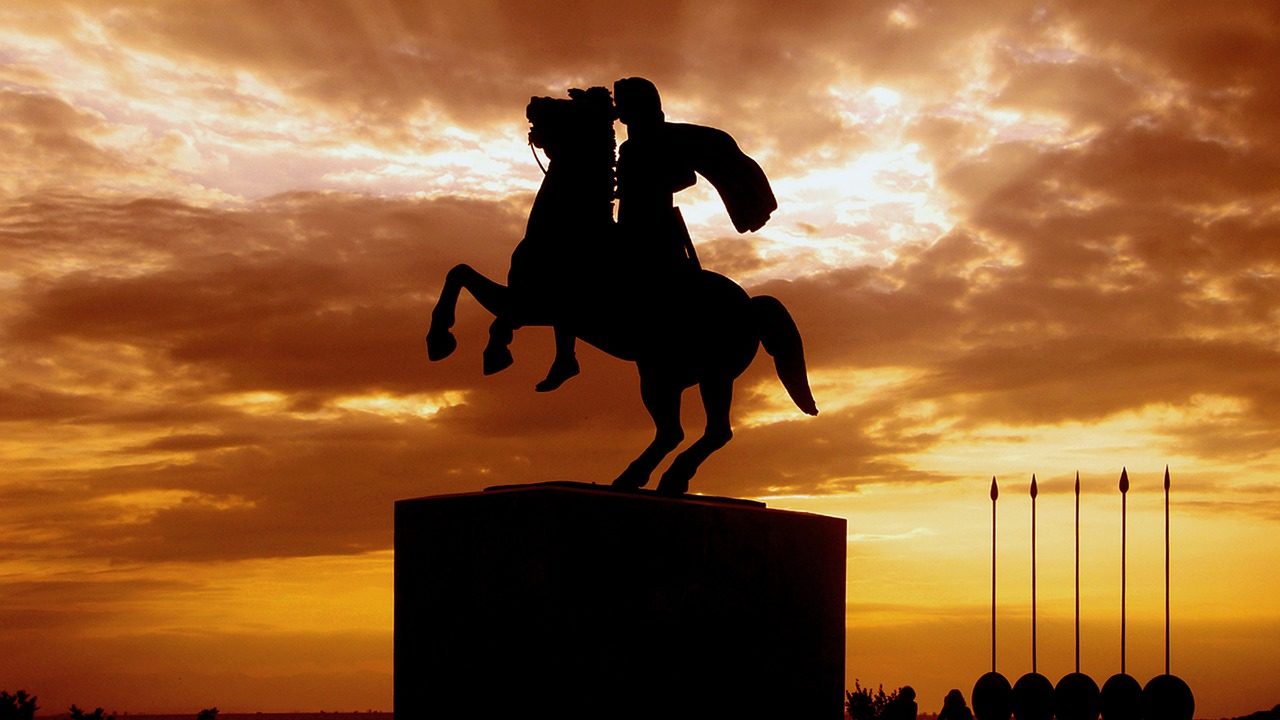Gold staters of this type were originally struck during the reign of Philip II of Macedon (359-336 BC). Featuring a portrait of Apollo on the obverse and a biga of horses on the reverse, they were a symbol of the king’s power and success. The trusted type continued to be struck during the reign of Alexander the Great, in the name of his deceased father, and many more were issued into Philip III’s reign.
This coin, however, stands out from the rest. The dies used to strike this particular gold stater have been engraved with exceptional skill, resulting in a familiar-looking portrait. Why was so much effort put into producing this short-lived issue, and why does the portrait of Apollo look so different?


The portrait of Apollo we see here has, remarkably, been modelled on Alexander the Great’s. His eyes, wide open, reflect what we see on contemporary Hellenistic portraiture, as well as later coins struck during the reign of Lysimachus in Thrace. Alexander may have been portrayed using a similar method on silver tetradrachms struck in his name, but none are as convincing or lifelike as this portrait. But why was Alexander’s face placed on this issue of coins?

The answer is one of legitimacy and unity. Alexander had died in 323 BC – the year before this enigmatic coin was struck. He had supposedly nominated his cavalry commander, Perdiccas, as his successor on his deathbed. Perdiccas did not seize power, instead opting to find out the gender of Alexander’s yet-unborn child. If male, the baby could have been a legitimate successor to his father. The army, however, supported Alexander’s brother, Philip, as ruler. The result was a ‘joint’ rule of Philip III and Alexander’s newly born son, Alexander IV.
These gold staters, likely minted in Kolophon, have been interpreted as a way of shoring up the somewhat shaky regime which emerged after Alexander’s death. Generals were wanting to carve up the Macedonian king’s vast empire, and this gold coin, which would have likely been seen by the key political figures of this time, may have been intended to remind them of the unity which Alexander brought. It was a statement, that Alexander’s great empire should remain whole, ruled by his ‘rightful’ successors – who were of course, pawns, of the powerful Macedonian generals.


